The world of mattresses is complex. It’s not always clear what makes one mattress better or worse.
When you complete our mattress finder quiz and submit your responses we have the total picture of your needs and preferences. With this information, we’re able to recommend the best mattress for you.
The following FAQs can help explain the importance of each selection, why you might choose one choice over another, and guide you through the process.
What’s on this page
Firmness | Body Weight | Features | Mattress Type | Budget | Size
What firmness should you choose?
Our firmness scale is a 1-10 scale where 10 is the most firm. To date, we have never tested any mattress firmer than a 9 or softer than a 3.5. Mattresses at the far extremes are incredibly rare and generally do not have the right balance of comfort and support (which is why you don’t see them manufactured).
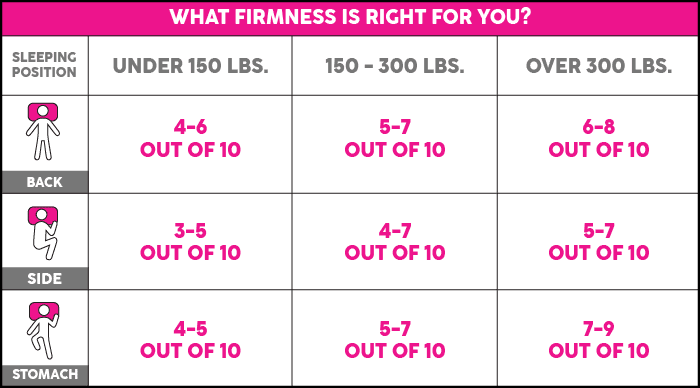
Most Sleepers
The vast majority of sleepers need a medium (5-5.5) to medium-firm (6-6.5) feel. If you are unsure what firmness works best for you then choosing medium firm (6-6.5) is the best option.
Light Weight Sleepers
Lighter weight sleepers, especially 120 pounds and less, often need a little more softness. This is especially true for lighter weight side sleepers. If this is you, soft (4-4.5) or medium (5-5.5) is the best choice.
Heavier Weight Sleepers
Heavier weight sleepers, especially 250 pounds and up, often prefer a slightly more supportive and firmer feel. If this is you then choosing the medium-firm (6-6.5) or slightly firm (7-7.5) is the best choice.
Side Sleepers
Side sleepers typically need a soft (4-4.5), medium (5-5.5), or medium firm (6-6.5) feel.
Back Sleepers
Back sleepers typically need a medium firm (6-6.5) or slightly firm feel (7-7.5).
Stomach Sleepers
Stomach sleepers typically need a medium firm (6-6.5) or slightly firm feel (7-7.5).
Combination Sleepers
Combination sleepers and/or partners with a mix of needs should go with a medium (5-5.5) or medium firm feel (6-6.5).
If you’re unsure what firmness you need see our complete Mattress Firmness Guide.
What if my partner and I have different firmness needs?
If your needs are slightly to moderate different then we can usually find a compromise firmness. That is, a firmness that sits in the middle of you and your partner’s respective needs.
If you and your partner’s needs are significantly different then we have two good approaches:
- Split King – with a Split King you’ll have 2 Twin XL mattresses side by side. With this setup, you and your partner can both get the precise firmness that works best for your body. A Split King is identical in dimensional footprint compared to a regular King.
- Internal Split Firmness – there are a few mattress brands that offer an internal firmness split. With this setup, you’ll have a Queen or King mattress that looks like a normal mattress. However, the top most comfort layer is tuned to each partner’s specific needs. This allows you to get soft, medium, or firm feel on each side of the mattress.
Why do you need to know my body weight?
Your body weight is a critical factor in determining how the mattress comfort and support dynamic will work for you. Lighter weight sleepers often need a little more softness and pressure relief. Heavier weight sleepers often need a little more support and mattresses with higher performance materials to ensure longevity.
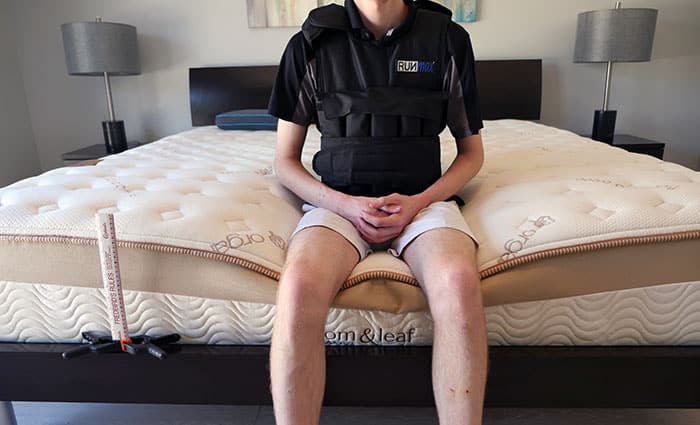
In addition, when sleep partners have substantially different weights that can dramatically alter the types of mattresses that will best meet the needs of both sleepers.
What mattress features are most important to you?
- Cooling – mattresses that retain less heat and breathe better are able to sleep cooler. This can help your body better regulate your internal temperature, allowing you to remain asleep throughout the night. Desiring a cool mattress doesn’t mean the mattress will be “cold”. It just means it won’t heat up.
- Low Motion Transfer – mattresses with less motion transfer are better able to isolate the motion and energy from partners during the night. When one partner gets up, moves around, changes positions, or gets into bed, it creates motion on the mattress. When a mattress has less motion transfer it helps ensure that the other partner isn’t disturbed and awoken by these movements.
- Fast Response Time – mattresses with a faster response time more quickly adapt to your movements and position changes during the night. Faster response also helps to avoid a “stuck” feel and can improve sex.
- Strong Edge Support – mattresses with strong / better edge support enable the edge of the mattress to remain fully supportive. A more supportive edge allows you to sleep nearer to the edge, as well as using the edge of the mattress for amorous activities, getting ready in the morning, TV watching, work, etc.
- Sex Performance – mattresses with higher bounce, stronger edges, making less noise, relieving more pressure, and remaining cooler enable better sex performance. When these factors are better sex is improved on the mattress.
- Pressure Relief – mattresses with a thicker comfort layer, quilted cover, euro top, pillowtop, and/or higher performance foams are able to create better pressure relief. Better pressure relief prevents pressure point build up, pains, and other support issues during the night. Better pressure relief enables better sleep.
What mattress type should you pick?
- Coil – coil mattresses create a more traditional feel. In addition, they typically offer the best cooling performance (since there is no foam to absorb and retain heat). Coil mattresses also generally have better edge support, response, and sex performance.
- Hybrid – hybrid mattresses create a more modern feel blending coils with foam (and sometimes other materials). These are among the most balanced and popular high performance mattresses on the market. If you’re unsure what mattress type works best for you then I would strongly suggest hybrid over all other types. Hybrid mattresses are available as memory foam hybrids, latex hybrids, and poly foam hybrids.
- Memory Foam Hybrid – a memory foam hybrid combines the feel of memory foam and coils. Memory foam hybrids have a higher and more dramatic contouring hug compared to more typical hybrids. They also generally have lower motion transfer.
- Memory Foam – memory foam mattresses create a more pronounced hug and contour around the body. Memory foam mattresses also generally have better pressure relief compared to many other mattress types. Memory foam is more susceptible to cooling issues compared to hybrids and coil mattresses.
- Latex Hybrid – a latex hybrid combines the feel of latex foam and coils. Like all foam latex mattresses, they have a more generalized and restrained contouring hug around the body. Beyond that, they share many of the same benefits of latex foam, including excellent cooling, great durability, and rapid responsiveness. However, they are also quite heavy to move due to the weight of the latex.
- Latex Foam – latex mattresses have a more unique feel. It’s highly responsive, springy, with a generalized contouring hug around the body. These mattresses, be they 100% foam or latex hybrids, are also quite heavy and difficult to move. Latex mattresses offer better cooling compared to most other foam and memory foam mattresses. They are also arguably the most durable mattress type on the market. A high performance latex mattress can least 15-20 years.
- Foam (Any) – 100% foam mattresses are built using a mix of poly, memory, and latex foam. These mattresses generally have lower motion transfer and are less expensive. If you aren’t certain the type of mattress you’d prefer, but know for sure you don’t want coils or a hybrid, choosing the foam (any) option is a good choice.
- Specialty – specialty mattresses are made using uncommon, atypical, or rare materials. In addition, they may also offer unique smart features or other rare attributes. Purple’s hyper elastic polymer grid is an example of a rare specialty material. Sleep Number’s adjustable firmness is also an example of a specialty mattress. These mattress types are generally quite expensive relative to the market at large.
- Natural / Organic – typically, latex and latex hybrid mattresses, are also somewhere on the natural / organic scale. Organic mattresses are almost always also natural. However, a natural mattress isn’t necessarily organic. Organic is an additional certification requirement. If you want a natural / organic mattress you should understand that the mattress will almost certainly be a latex or latex hybrid mattress. While other hybrids, coil, and memory foam mattresses may have one or more organic / natural layers, they typically do not have enough materials within them for the entire mattress to be considered natural / organic.
- Plus-Sized / HD – Plus-sized and HD (heavy duty) mattresses are built using more robust materials. Thicker coils, higher density foams, and a taller mattresses are all common in plus-sized mattresses. These material and design choices provide greater performance, support, and longevity for heavier weighted bodies.
- Kids – kids mattresses are just that, mattresses designed for kids and children (usually 12 and under). These mattresses are typically thinner and slightly less expensive than a mattress designed for adults. They generally are designed for common kid weights, usually up to around 120 pounds.
- No Preference – no sure what you need? No problem. Just mark no preference and I’ll recommend the best choice for you based on your other inputs.
How much money should I spend on a mattress?
There is absolutely no need to spend a crazy amount of money to get a nice mattress.
Generally, I recommend spending up to $1,500 for a Queen and $1,700 for a King. At this point you maximize quality and performance, while not spending any more money than you have to.
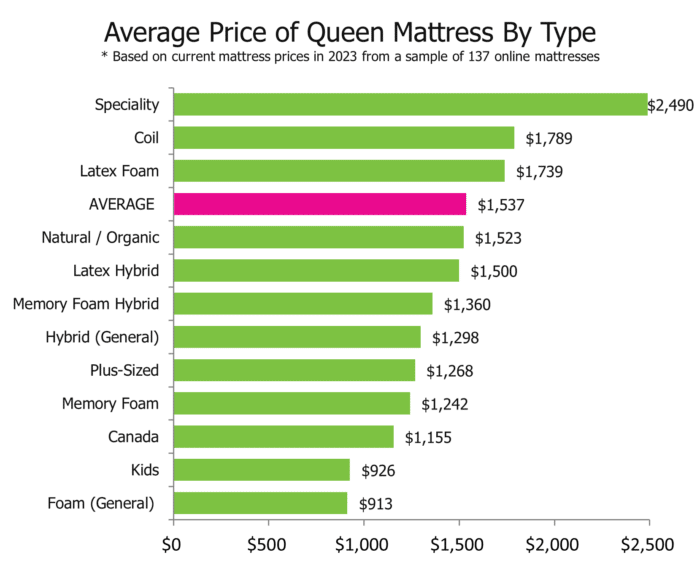
See our deep dive guide on How Much Does a Mattress Cost for more.
When should you spend more money on a mattress?
If you want a latex, natural, or organic mattress you should be prepared to spend more. These mattress types tend to cost more money because the material within them is simply more expensive to source. I would recommend spending up to $2,500 for a Queen and $2,800 for a King.
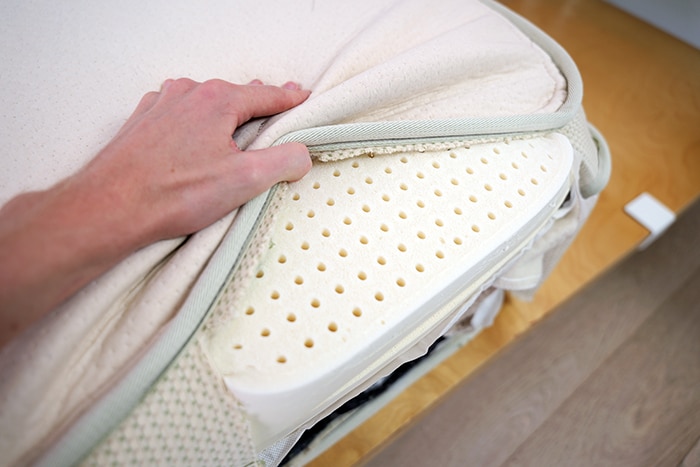
If you want a soft mattress you should be prepared to spend more. Soft mattresses require more material in order to be both soft and supportive. High quality soft mattresses start around $1,000 for a Queen and $1,200 for a King. I would not spend less than this for a soft mattress.

If you need an HD / plus-sized mattress you should be prepared to spend more. Plus-sized mattresses have higher performance materials in them that allow them to create better support and provide better durability for heavier bodies. I would recommend spending at least $1,700 for a Queen and $1,900 for a King.
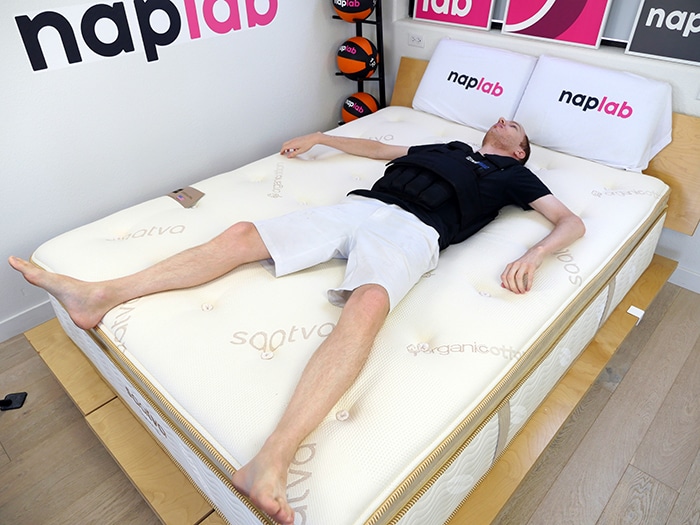
What is the least expensive mattress I should buy?
$500 for a Queen and $600 for a King is the least expensive I generally recommend. Mattresses below this price point are plagued by numerous issues (quality, health, safety, durability, performance) and they are not a worthwhile investment.

In general, ultra budget friendly mattresses are less expensive because they use inferior quality material. The foams are typically less dense and lower quality. Coil units are also notably worse (fewer coils, worse edge support, worse wire gauge).
These mattresses are almost always thinner and with worse build quality. This combination of issues means they won’t perform as well and they don’t last as long.
That said, if you’re able to spend $1,000 for a Queen or $1,200 for a King the performance jump up over the $500 mattress is significant.
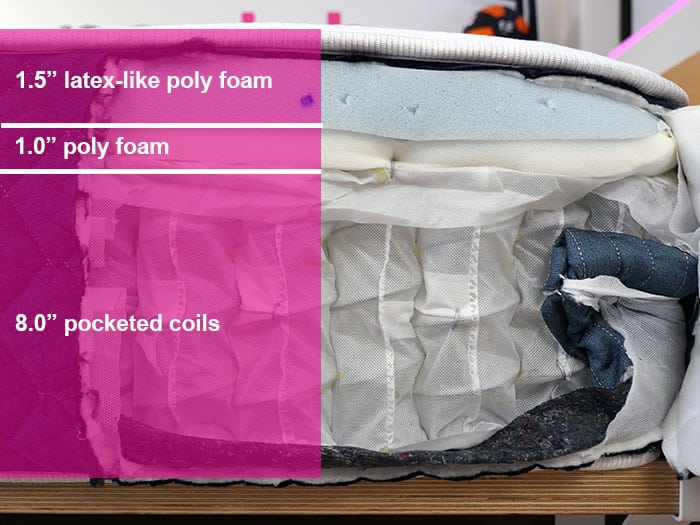
Most mattresses will see notable step ups in performance, quality, and durability up to $1,500 for a Queen / $1,700 for a King. Beyond that threshold and you start to see diminishing returns.
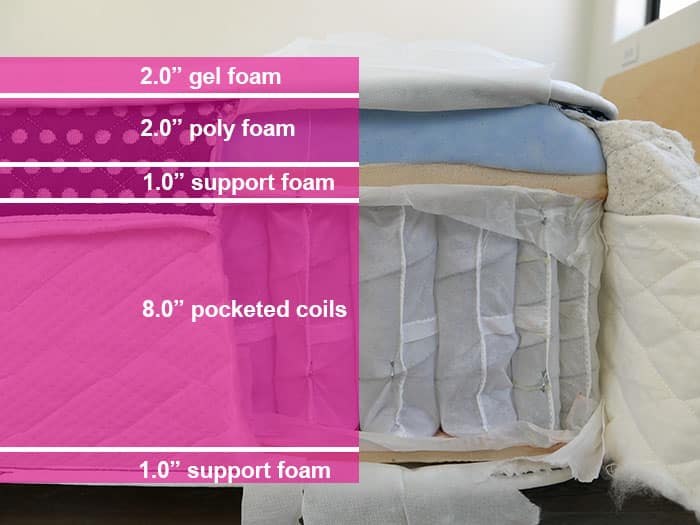
What mattress size should I buy?
In most cases, you’ll simply buy the mattress size that makes the most sense for your room size and/or the mattress size that matches your existing bed frame / foundation.
Having a little more room on your mattress can make a significant difference for sleep quality. This is especially true for those who sleep with a partner.
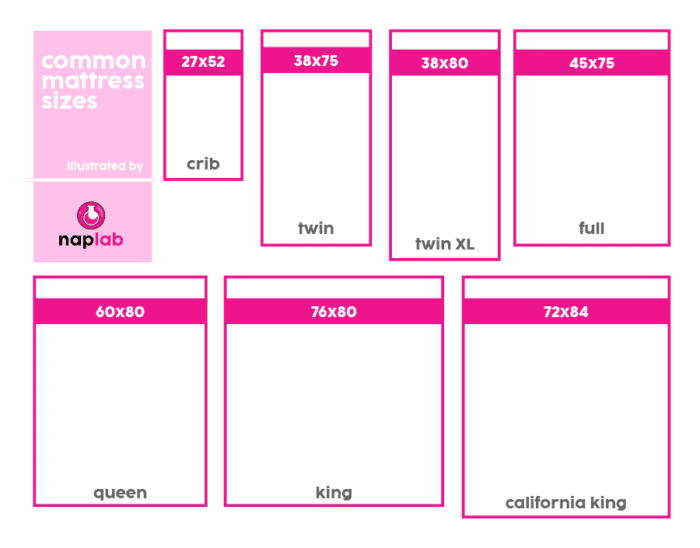
However, I would not recommend purchasing a larger mattress if the increase in cost means you now need to purchase an inferior mattress. In my view, it’s better to have a slightly smaller, but better mattress.
This is especially true when you’re deciding between Queen and King. If your budget is $1,000 you are much better off with a Queen than a King mattress.

See our deep dive guide on Mattress Sizes for more.
Have more questions?
If you’re still unsure about anything please include any questions in the “Other Info” section of the mattress quiz. Or you can email me directly using this form.



